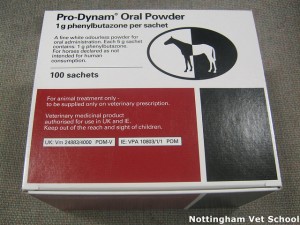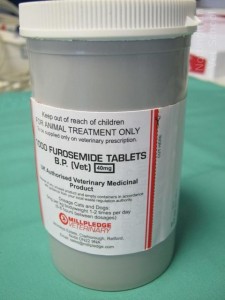Overuse of Drugs
Drugging, either to enhance performance or mask pain, is a common occurrence in the North American racing world. Many of the drugs that are administered to basically every racehorse in North America have been banned in the UK, Japan, Europe, and all of the other major racing jurisdictions in the world [1].
The real concern lies with the drugs that are used to mask pain, which keeps injured horses running when they should be resting. In the late 1960s/early 1970s, a policy of “permissive medication” was adopted in North America, despite the fact that this was banned elsewhere in the world. This policy was intended to legally regulate the limits of drug administration for therapeutic use; however, it has instead led to rampant drug use.
Some drugs, like opiates, are banned from racing. However, bronchodilators, anabolic steroids, and non-steroidal anti-inflammatory drugs are all allowed, within certain limits [1]. Furosemide, an anti-bleeding medication (for when horses bleed into their lungs; known as exercise-induced pulmonary hemorrhage), and phenylbutazone (aka bute), an NSAID, are legal in most jurisdictions and both can legally be administered on race day [1]. Outside of North America, no other country in the world allows race day medication, nor do they allow their horses to run on the threshold levels that are permitted in North America [1].
Misuse of the Whip
Perhaps the most heatedly debated issue in horse racing is the use (or misuse) of the whip. The whipping of horses is an obvious concern with regards to animal welfare, as horses are sometimes hit hard enough to leave a weal, which is an accumulation of fluid within the skin in response to a blow [2]. Horses also tend to be whipped more frequently in the final stretch of a race, when they are more likely to be tired [3,4].
While many jockeys and other industry insiders are loathe to part with the whip, some recent studies have suggested that the whip is not a useful tool when it comes to encouraging horses to go faster [4].
It is interesting to note that Norway is the only country to have banned the use of whips. As Evans and McGreevy (2011) pointed out: “it seems obvious that if all horses were trained to gallop without whips, there would still be winners.”
Sources:
- Allin, J. 2011. The Chemical Horse: Drugs in Horse Racing. International Fund for Horses. Available at: http://www.horsefund.org/the-chemical-horse-part-9.php. Accessed: April 1st, 2012.
- British Horseracing Authority. 2011. Responsible regulation: a review of the use of the whip in horseracing. Available at: http://www.britishhorseracing.com/whip-review/. Accessed April 1st, 2012.
- McGreevy, PD, Corken, RA, Salvin, H, Black, CM. 2012. Whip use by jockeys in a sample of Australian Thoroughbred races- an observational study. PLoS ONE 7: e33398. doi:10.1371/journal.pone.0033398
- Evans D, McGreevy P. 2011. An investigation of racing performance and whip use by jockeys in Thoroughbred races. PLoS ONE 6: e15622. doi:10.1371/journal.pone.0015622



